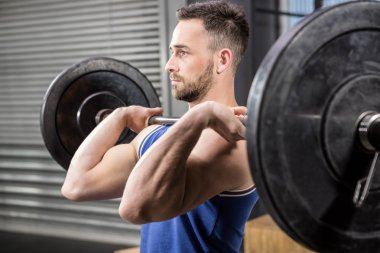
What Is Difference Between Deadlift And Squat (9 Important Differences)
What is the difference between deadlift and squat? While both exercises target the lower body, they engage different muscle groups and involve distinct movement patterns. Deadlifts and squats are two powerhouse exercises that form the backbone of many strength-training routines, but despite their similarities in working the lower body, they target muscles in unique ways and require different movement patterns.
While both are celebrated for building strength and muscle, the deadlift is a pulling movement primarily focused on your posterior chain—think back, glutes, and hamstrings—whereas the squat is a pushing motion that places greater emphasis on your quadriceps, glutes, and core. Understanding the key differences between these two lifts can help you unlock better results and prevent injury in your fitness journey!
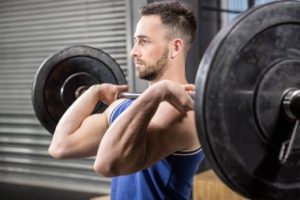
What Is Difference Between Deadlift And Squat
The deadlift and squat are both fundamental strength exercises but target muscles differently. The deadlift primarily works your posterior chain (lower back, hamstrings, and glutes), while the squat focuses more on the quadriceps, glutes, and core. Deadlifts are performed by lifting a barbell from the ground, whereas squats involve lowering your hips and standing back up. Both exercises are crucial for building full-body strength but offer unique benefits based on muscle activation and movement patterns.
Deadlift vs Squat: Muscle Activation and Movement Patterns
The deadlift is often described as a hinge movement, where you bend at the hips to lift the weight from the ground. This makes it a staple for targeting the posterior chain—specifically your hamstrings, glutes, and lower back. The deadlift is particularly effective for improving hip strength, core stability, and grip strength. Some popular variations include the Romanian deadlift and sumo deadlift, each altering muscle emphasis slightly.
In contrast, the squat is a knee-dominant exercise that focuses more on your quadriceps, glutes, and core. When performing a squat, you’re essentially lowering your hips by bending your knees and then driving back up to a standing position.
Key Benefits of Each
Both exercises are key for building full-body strength and enhancing athletic performance. The deadlift improves pulling power, hip mobility and spinal stability, making it excellent for overall posterior development. The squat, on the other hand, excels at developing lower body strength, enhancing mobility, and improving core engagement. Incorporating both into your workout routine provides a balanced approach to muscle building, strength gains, and injury prevention.

Biomechanics and Mechanics
Deadlift
In biomechanics and mechanics, the deadlift is a fundamental lift that emphasizes proper technique and body alignment. Starting from the barbell on the floor with shins close to it, the lifter initiates the lift by performing a hip-hinge motion. This core component involves pushing the hips back while driving through the heels to elevate the bar.
Maintaining a neutral spine throughout the movement is crucial to avoid injury and ensure efficient force transfer. The grip on the bar, whether overhand or mixed, is also significant, as grip strength contributes greatly to the overall success and safety of the lift. Proper execution of these biomechanical principles ensures both effectiveness and injury prevention in deadlifting.
Squat
Biomechanics and mechanics of the squat involve key principles that govern movement and force distribution. In the starting position, the barbell can be placed on the upper back (back squat) or front shoulders (front squat), which alters the load’s center of gravity and affects muscle engagement. During the squat motion, the hips lower as the knees bend, maintaining an upright torso to ensure proper spinal alignment.
An upright spine throughout the movement is essential for minimizing stress on the lower back and promoting safe, effective lifting. Foot placement can vary based on individual anatomy, but it is typically slightly wider than shoulder-width, with toes pointed slightly outward to allow for optimal knee tracking and hip mobility during the descent and ascent. Proper biomechanics ensure effective load distribution across the hips, knees, and ankles, maximizing strength while minimizing injury risk.
Primary and Secondary Muscles Worked
Deadlift
The deadlift is a compound movement that targets multiple muscle groups, making it a highly effective strength-building exercise. The primary muscles worked during a deadlift include the glutes, hamstrings, erector spinae, and traps. These muscles are responsible for hip extension, spinal stabilization, and shoulder support, which are key actions during the lift.
Additionally, secondary muscles such as the forearms (for grip strength), upper back, calves, and core also play significant roles in maintaining posture, balance, and control throughout the lift. Together, these muscles contribute to the full-body engagement and strength gains associated with deadlifts.
Squat
The squat is a powerful lower-body exercise that primarily targets the quadriceps and glutes, making it an essential movement for building strength and size in these muscle groups. The quadriceps are responsible for extending the knee, while the glutes drive the hip extension during the upward phase of the squat.
In addition to these primary muscles, several secondary muscles play a crucial role in stabilization and balance during the movement. The hamstrings assist in hip extension, while the calves help stabilize the ankles. The core and lower back engage to maintain proper posture and support the spine throughout the exercise, contributing to overall stability and reducing the risk of injury.
Joint Involvement
Deadlift
The deadlift is a compound exercise primarily involving the hip and ankle joints, with relatively minimal engagement of the knees. As the lifter lifts the barbell from the ground, the primary movement occurs at the hips, which drive the lift by extending and engaging the gluteal and hamstring muscles. Although the knees do flex slightly during the movement, their role is secondary to that of the hips.
The deadlift also places a significant load on the lower back, requiring substantial strength and stability from the lumbar region to support the weight and maintain proper form throughout the exercise. This distribution of load emphasizes the importance of core stability and proper technique to prevent injury and maximize the effectiveness of the lift.
Squat
In a squat, joint involvement is key to its effectiveness and safety. The exercise primarily engages the knee and hip joints, with notable emphasis on knee flexion as you lower your body and hip flexion as you return to the standing position. This motion requires a significant range of movement at both joints, demanding coordination and strength. Additionally, the squat distributes the load more evenly across the legs, back, and core. This balanced load helps in developing overall lower body strength and stability while also enhancing core engagement to support proper posture and prevent injury.
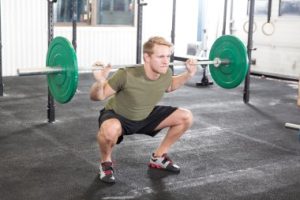
Variations and Their Impact
Deadlift Variations
Deadlift variations offer distinct benefits and target different muscle groups, impacting overall strength and conditioning. The conventional deadlift, with its standard hip-width stance, engages the entire posterior chain, making it a comprehensive lower-body exercise. In contrast, the sumo deadlift features a wider stance, which shifts the emphasis towards the hips and reduces strain on the lower back, making it ideal for those seeking to alleviate back stress.
The Romanian deadlift highlights the hamstrings through a deep stretch and minimizes knee involvement, which enhances hamstring strength and flexibility. Meanwhile, the trap bar deadlift, utilizing a neutral grip, decreases spinal stress and provides a more balanced distribution of weight, which can be beneficial for those with lower back concerns or who prefer a different grip position. Each variation offers unique advantages, allowing individuals to tailor their workouts to their specific goals and needs.
Squat Variations
Squat variations each bring unique benefits and challenges, impacting strength and mobility differently. The back squat, a classic exercise with the barbell positioned on the upper back, primarily targets the glutes and quadriceps, making it effective for building lower body strength. In contrast, the front squat, where the barbell rests on the front shoulders, shifts the emphasis more towards the quadriceps and requires greater core stability to maintain an upright posture.
The goblet squat, utilizing a dumbbell or kettlebell held at chest level, is particularly beginner-friendly, offering a straightforward way to develop proper squat mechanics and strength. On the other hand, the overhead squat, with the barbell held overhead, demands exceptional mobility in the shoulders, hips, and ankles, along with significant core strength to stabilize the body throughout the movement. Each variation thus serves to enhance different aspects of physical fitness, catering to various levels of experience and specific training goals.
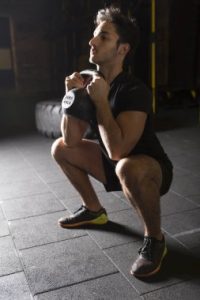
Benefits
Deadlift
The deadlift is a powerhouse exercise that offers numerous benefits for overall fitness and strength. Primarily, it improves the strength of the posterior chain, which includes key muscles such as the hamstrings, glutes, and lower back. This enhancement not only boosts performance in other lifts but also supports better posture and spinal alignment.
Additionally, deadlifts enhance functional movement by mimicking real-life actions like lifting objects off the ground, which can improve your ability to perform daily tasks with greater ease and safety. Moreover, the deadlift is excellent for building grip strength, as holding onto heavy weights challenges and strengthens the muscles in your hands and forearms, which can benefit a variety of other exercises and daily activities.
Squat
Squats offer a range of benefits that extend beyond just building lower body strength. By engaging multiple muscle groups, including the quadriceps, hamstrings, glutes, and core, squats significantly improve overall lower body and core strength. This exercise also enhances mobility, balance, and flexibility, contributing to better functional movement patterns.
Additionally, squats are highly effective for athletic performance, particularly in sports that demand explosive leg movements, such as basketball and soccer. The ability to perform powerful, dynamic movements is greatly enhanced through regular squatting, making it a key component of any athletic training regimen.
Common Mistakes
Deadlift
Common mistakes in performing deadlifts include rounding the back, which can lead to serious injury due to undue stress on the spine. Another frequent error is relying too much on the lower back instead of engaging the hips and legs, which can strain the back and reduce overall lifting efficiency.
Overextension at the top of the lift, where the lifter leans back excessively, can also compromise form and lead to lower back discomfort or injury. Proper technique involves maintaining a neutral spine, driving through the heels with hip engagement, and standing tall without overextending.
Squat
When performing squats, several common mistakes can compromise effectiveness and increase the risk of injury. One frequent error is allowing the knees to cave inward during the ascent, which can strain the ligaments and affect joint alignment. Another mistake is bending too far forward, which places excessive stress on the lower back and diminishes core stability.
Additionally, lifting the heels off the ground can reduce stability and disrupt balance, making the exercise less effective and more dangerous. Correcting these issues involves maintaining proper knee alignment, keeping the torso upright, and ensuring the heels stay firmly planted throughout the movement.
Risk of Injury
Deadlift
The deadlift, while an excellent exercise for building strength and power, carries a higher risk of injury, particularly to the lower back, if proper form is not maintained. When performing a deadlift, it’s crucial to ensure that your back remains neutral throughout the movement.
Compromised form, such as rounding the lower back or lifting with excessive weight, can place undue stress on the lumbar spine, increasing the risk of strains or more severe injuries. To mitigate these risks, focus on using correct technique, including engaging the core, keeping the bar close to your body, and lifting with your legs rather than your back. Regularly practicing proper form and gradually increasing weight can help ensure that you gain the benefits of deadlifting while minimizing the potential for injury.
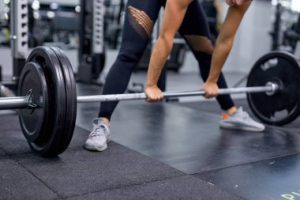
Squat
When performing squats, the risk of injury is heightened if proper alignment is not maintained. Poor form can lead to knee or lower back injuries, as improper alignment places excessive stress on these areas. For instance, if the knees collapse inward or the lower back rounds excessively, it can strain the surrounding muscles and ligaments, increasing the likelihood of injury. To minimize these risks, it is crucial to focus on correct technique, including maintaining a neutral spine, keeping the knees aligned with the toes, and engaging the core muscles throughout the movement.
Load and Weight Differences
Deadlift
When comparing load and weight differences in deadlifting, lifters typically handle heavier weights due to the exercise’s biomechanical advantages. The deadlift involves lifting a barbell from the floor to a standing position, which allows for a more direct line of force.
This direct pull reduces the range of motion compared to other exercises like squats or bench presses, where the bar must travel through a larger arc. As a result, the lifter can generate greater force and lift heavier loads. Additionally, the deadlift primarily targets large muscle groups, including the glutes, hamstrings, and lower back, contributing to the ability to handle significant weights efficiently.
Squat
When comparing the squat and deadlift, it’s important to note the differences in load and weight that can be handled in each exercise. Squats generally involve lifting less weight compared to deadlifts. This is primarily due to the greater range of motion required in squats, which demands more balance and coordination.
The movement in a squat begins from a lower position and requires significant engagement of the core and lower body muscles throughout the full range of motion. In contrast, deadlifts start from a standing position and involve a more straightforward lifting motion, allowing for the use of heavier weights. The biomechanics of each exercise thus contribute to the variance in the amount of weight that can be effectively lifted.
Which is Better?
Depends on Goals
Deciding whether deadlifts or squats are better largely depends on your fitness goals. If your primary aim is to build lower body mass and strength, squats should take priority, as they effectively target the quads, hamstrings, and glutes.
On the other hand, if your focus is on enhancing posterior chain strength and overall pulling power, deadlifts are crucial due to their emphasis on the lower back, glutes, and hamstrings. However, for a well-rounded program that promotes full-body development, incorporating both exercises is ideal. This balanced approach ensures comprehensive strength and muscle growth across multiple muscle groups.
Depends on condition
When choosing between deadlifts and squats, the best option can vary based on individual conditions. For people with knee pain, deadlifts might be preferable since they generally place less stress on the knees compared to squats, which require significant knee flexion. On the other hand, squats can be a safer choice for individuals with lower back pain or injuries because the movement pattern allows for better spinal alignment and can be modified with lighter weights or different variations to reduce strain.
For beginners, squats are often recommended because they help build foundational strength and stability, focusing on the lower body muscles while engaging the core. However, it’s crucial to perform both exercises with proper form and, if needed, consult a fitness professional or healthcare provider to tailor the exercises to individual needs and limitations.
FAQs: What Is Difference Between Deadlift And Squat
Q1. What are the key differences between a deadlift and a squat?
A. Deadlift: Primarily targets the posterior chain (back, glutes, hamstrings) and involves lifting a weight from the ground to a standing position.
Squat: Primarily targets the lower body (quads, glutes, hamstrings) and involves lowering the body from a standing position into a squat before returning upright.
Q2. Which muscles do deadlifts work compared to squats?
A. Deadlifts: Engage the hamstrings, glutes, lower back, and traps. They focus on the posterior chain and core stability.
Squats: Target the quadriceps, glutes, and calves while also involving the hamstrings and core for balance.
Q3. Are deadlifts or squats better for building strength?
A. Both exercises build overall strength but in different areas. Deadlifts enhance grip strength, back, and posterior chain development, while squats are superior for building quad strength and lower body power.
Q4. Which is more effective for glute development: deadlifts or squats?
A. Both exercises work the glutes, but deadlifts tend to emphasize the glutes and hamstrings more due to the hip hinge movement. Squats, especially deeper ones, also engage the glutes but focus more on the quads.
Q5. Are deadlifts or squats riskier for injury?
A. Both can cause injury if performed incorrectly. Deadlifts often lead to back injuries if form is compromised, while squats can strain the knees or lower back. Proper form, controlled movements, and appropriate weight are crucial for both exercises.
Q6. Should I include both deadlifts and squats in my workout routine?
A. Yes! Including both exercises in your routine provides a balanced lower-body and full-body workout. Deadlifts focus on posterior chain strength, while squats target the anterior lower body and core.
Q7. Which burns more calories: deadlifts or squats?
A. Both exercises are great for burning calories, but deadlifts generally burn slightly more because they engage more muscles across the body and require greater overall energy expenditure.
Q8. Can I do deadlifts and squats on the same day?
A. Yes, but it depends on your fitness goals and recovery capacity. Many lifters pair them in the same session with proper warm-up and rest. However, performing both on the same day can be taxing, so be mindful of form and fatigue.
Q9. Which exercise is better for beginners: deadlift or squat?
A. Squats are often easier for beginners to learn, as the movement pattern is more natural. Deadlifts, while effective, require more attention to form, particularly for protecting the lower back.
Q10. Do squats or deadlifts engage the core more?
A. Both exercises activate the core, but in different ways. Deadlifts engage the core for stabilization and to protect the spine during the lift. Squats also engage the core, particularly in maintaining an upright posture and balance during the descent and ascent.
Conclusion
In conclusion, while both the deadlift and squat are fundamental strength exercises, they target different muscle groups and movement patterns. The deadlift primarily focuses on the posterior chain, including the hamstrings, glutes, and lower back, and involves lifting a weight from the ground. On the other hand, the squat emphasizes the quadriceps, glutes, and core, and involves lowering and raising the body while holding a weight. Each exercise has unique benefits, making them complementary in a strength-training routine. Understanding these differences can help individuals tailor their workouts to their specific goals, whether improving lower body strength, overall power, or athletic performance.